27 Tasty Asian Freshwater Fish Meals Every Food Lover Needs
Asian freshwater fish cuisine represents a vibrant culinary landscape brimming with cultural significance and delectable traditions.
Regional waterways provide an incredible bounty of aquatic ingredients that transform simple meals into extraordinary experiences.
Fishers and home cooks alike leverage unique preparation techniques that highlight delicate flavors and textures.
These dishes reflect generations of inherited knowledge passed through family recipes and local customs.
Rivers, lakes, and streams contribute essential protein sources that connect communities through shared gastronomic heritage.
Diverse cooking methods ranging from steaming to complex marinades showcase the nuanced approaches across different Asian regions.
Culinary experts have perfected techniques that elevate these freshwater swimmers into memorable dining encounters.
Below are 27 remarkable Asian freshwater fish dishes that will tantalize your taste buds:
Top Asian Freshwater Fish Dishes to Try
Asia’s rivers and lakes provide the foundation for an array of fresh fish recipes. Delicate broths, spicy marinades, and inventive cooking styles make each dish unique.
Shorshe Ilish
Shorshe ilish emerges as a celebrated Bengali delicacy featuring hilsa fish swimming in a bold mustard seed sauce.
Mustard seeds ground into a pungent paste create the signature intense flavor profile that distinguishes this classic preparation.
Green chili peppers and vibrant spices like turmeric and cumin amplify the complex taste sensations of the dish.
Mustard oil adds depth and traditional authenticity to the cooking process.
Fish slices simmer gently in the rich sauce, absorbing layers of aromatic seasonings.
Regional variations might incorporate yogurt or milk for added smoothness.
Steamed rice traditionally accompanies this flavorful fish preparation.
Bengal's culinary heritage shines through this spectacular seafood specialty that balances spicy, tangy, and rich flavor elements.
Masgouf
Masgouf is Iraq's signature grilled fish dish featuring fresh carp butterflied and cooked beside an open flame with a distinctive crispy exterior.
Iraqi cooks traditionally prepare the fish by splitting it, covering it with salt, and mounting it on wooden skewers near blazing fires.
River Tigris cities like Baghdad embrace this culinary tradition most passionately, where restaurant patrons watch their meal being prepared in dramatic outdoor settings.
River carp provides the primary protein, selected for its tender meat and local availability.
Salt helps create a crackling skin while enhancing natural fish flavors during cooking.
Skilled grill masters monitor the slow roasting process carefully to prevent burning.
Regional variations might include different marinades or seasoning blends depending on local preferences.
Iraqis consider masgouf more than just a meal - it represents a cultural experience connecting people through shared food traditions.
Pecel Lele
Pecel lele sparks excitement as a classic Indonesian street food masterpiece featuring crispy deep-fried catfish smothered in fiery sambal paste.
Javanese communities cherish this affordable protein-packed meal served with fresh vegetables like cucumbers, string beans, and cabbage.
Street vendors called warung tenda specialize in preparing this quick and satisfying dish during evening hours.
Steamed rice, tofu, and tempeh frequently accompany the crisp fish, creating a balanced meal.
Diners can complement the spicy flavors with refreshing orange juice or traditional tea.
Low-cost ingredients make pecel lele accessible to many hungry locals.
Regional variations add subtle twists to this beloved street food staple.
Ilish Macher Paturi
Ilish macher paturi highlights Bengal's culinary mastery through its signature steamed fish wrapped in banana leaves.
Bangladeshi cuisine celebrates this national dish featuring ilish, a prized fish marinated with robust mustard paste and fiery chili peppers.
Mustard oil and turmeric infuse deep flavors into the tender fish before wrapping it carefully in green banana leaves.
Traditional cooking methods involve gentle steaming or roasting that preserves the fish's delicate texture and intense spice profile.
Cooks reserve a portion of the marinade to drizzle over the cooked fish, enhancing its aromatic complexity.
Fragrant rice typically accompanies this seafood specialty, creating a balanced meal that reflects regional ingredients and cooking techniques.
Bangladesh's coastal regions consider ilish macher paturi a treasured gastronomic expression of cultural heritage.
Generations have passed down this recipe, maintaining its authentic preparation and significance.
Caramelized Fish In Clay Pot (Ca Kho To)
Ca kho to celebrates Vietnamese culinary artistry through slow-braised fish infused with rich caramelized flavors in traditional clay pots.
River fish like catfish or snakehead transform into a savory delicacy when simmered with fish sauce, sugar, and coconut water.
Generations of Vietnamese families have perfected this technique, creating a deeply umami dish with complex sweet-salty notes.
Sliced scallions and garlic enhance the fish's natural taste, providing aromatic depth to each tender bite.
Traditional clay pot cooking allows precise heat distribution and intensifies the caramelization process.
Served alongside steamed rice and complemented by a light fish soup, ca kho to represents southern Vietnamese cuisine's elegant simplicity.
Each spoonful tells a story of regional ingredients and time-honored cooking methods.
Amritsari Fish (Amritsari Machhli)
Amritsari fish embodies Punjab's bold street food culture, featuring crispy deep-fried fish with an irresistible spice blend from northern India.
Golden-brown freshwater fish gets marinated in a zesty mixture of ginger-garlic paste, ajwain, red chili powder, and garam masala.
Gram flour creates a crackling exterior that seals in succulent flavors and moisture during deep frying.
Lemon juice and amchur powder add tangy complexity to the spice coating.
Turmeric contributes warm color and earthy undertones to the dish.
Salt balances the intense spice profile while ensuring maximum taste.
Curd helps tenderize the fish and enhances its creamy texture.
Served piping hot as a standalone snack, Amritsari fish offers a perfect blend of crunch, spice, and authentic Punjabi street food excitement.
Chueotang
Chueotang are nutrient-dense Korean mudfish soup renowned for robust healing properties and seasonal eating traditions.
Korean medical practitioners recommend this soup for its powerful health-boosting ingredients during summer and autumn months.
Mudfish forms the soup's core protein, ground or served whole depending on regional preparation methods.
Ginger, chili paste, and soybean paste create complex flavor profiles complementing the fish base.
Green vegetables like mustard greens, scallions, and cabbage add freshness and nutrition to the dish.
Seoul and Namwon regions offer distinct preparation techniques reflecting local culinary preferences.
Rice and traditional banchan side dishes typically accompany the soup during serving.
Medical benefits and seasonal availability make chueotang a significant part of Korean dietary culture.
Panta Ilish
Panta ilish symbolizes Bangladesh's rich culinary heritage, featuring fermented rice soaked overnight and crispy fried ilish fish as a beloved national delicacy.
Celebrated during Pahela Baishakh, this traditional meal combines tangy rice with spice-laden fish seasoned generously with turmeric and chili powder.
Fresh chili peppers and onions add sharp flavor to the dish, while bhorta accompanies the plate as a complementary side.
Urban Bangladeshi families cherish this meal as a cultural cornerstone connecting generations through shared culinary traditions.
Salt and spices elevate the fermented rice's complex taste profile, creating a unique sensory experience.
Ilish, considered Bangladesh's national fish, provides a rich, fatty texture that perfectly balances the rice's acidic notes.
Regional variations exist across different Bangladeshi communities, reflecting local ingredient availability.
Street vendors and home kitchens alike prepare this dish with deep respect for its cultural significance.
West Lake Vinegar Fish (Xihu Cu Yu)
West Lake vinegar fish represents a classic Hangzhou delicacy featuring tender grass carp poached and bathed in a tangy black vinegar sauce originating from Southern Song Dynasty culinary traditions.
Restaurant owner Sister Song first popularized this sweet-sour seafood specialty near West Lake in medieval China.
Fishermen would carefully clean and steam fresh grass carp with ginger before creating its signature sauce blending black vinegar, brown sugar, soy sauce, and stock.
Corn flour helps thicken the glossy liquid that coats each delicate fish fillet.
Sesame oil and finely chopped spring onions add final aromatic garnishes to this balanced dish.
Regional cooks take pride in preparing the fish with precise techniques passed through generations.
Diners appreciate its complex flavor profile that balances sharp vinegar notes with subtle sweetness.
Karimeen Pollichathu
Karimeen pollichathu are golden-crusted pearl spot fish parcels expertly wrapped in banana leaves and pan-fried to aromatic perfection.
Kerala fishermen traditionally prepare this signature seafood dish using local green chromide cichlids marinated in a fiery spice blend of turmeric, chili powder, pepper, and lime juice.
Coconut oil adds richness during shallow frying, creating a crispy exterior that seals in succulent fish flavors.
Fresh masala ingredients like tomatoes, onions, ginger, and green chili peppers complement the fish's natural taste.
Curry leaves provide additional depth and complexity to the spice mixture.
Vinegar adds a tangy undertone that balances the robust spices.
Banana leaf wrapping ensures moisture retention and imparts a subtle earthy aroma.
Kerala's coastal cuisine celebrates this unique seafood preparation as a true culinary gem.
Mok Pa
Mok pa is a traditional Laotian seafood dish originating in Luang Prabang that steams delicate fish wrapped in banana leaves with an aromatic blend of local spices.
Fresh fish gets mixed with sticky rice powder and ground herbs like kaffir lime leaves, lemongrass, and chili peppers.
Fragrant spices are carefully crushed in a mortar before being combined with fish pieces.
Each ingredient gets folded into banana leaves and gently steamed until flavors meld perfectly.
Salt and fish sauce enhance the protein's natural taste.
Regional cooks often use river fish caught nearby.
Village markets supply the freshest ingredients for this classic preparation.
Banana leaf wrapping helps seal moisture and infuse deep, complex flavors into the tender fish.
Macher Jhol
Macher jhol is a spicy Bengali and Odia fish stew brimming with intense regional flavors and aromatic spices.
Regional fishermen and home cooks carefully select fresh river fish like rohu or catla as the primary ingredient for this classic dish.
Traditional preparation involves simmering fish chunks in a complex broth enhanced with turmeric, chili peppers, and ginger-garlic paste.
Coriander, nigella seeds, cumin, and mustard seeds create a deep, multilayered flavor profile that distinguishes this stew from other fish curries.
Families often serve macher jhol with steamed rice, allowing the rich broth to soak into the grains.
Regional variations exist across different districts of Bengal and Odisha, with each area adding unique spice combinations.
Home recipes typically reflect generational cooking techniques passed down through families.
Nutritious and warming, macher jhol represents a cornerstone of eastern Indian cuisine.
Taedong River Grey Mullet Soup
Taedong River grey mullet soup stands as a signature North Korean seafood dish featuring fresh flathead grey mullet simmered in a delicate, transparent broth.
Fishermen along Pyongyang's river regions carefully prepare this traditional soup by cutting whole fish into small pieces and salting them before boiling in seasoned water.
Black pepper and soy sauce infuse deep maritime flavors into the clear liquid, creating a balanced taste profile that highlights the fish's natural essence.
Cooks customize the soup's seasoning by adding extra salt or soy sauce according to personal preference.
Chopped scallions or cilantro garnish the hot soup, adding fresh green notes and aromatic complexity.
Accompanying ingredients like garlic, peppers, tofu, or red bean paste complement the soup's mild flavor.
Small chunks of fish float within the transparent broth, offering a light yet satisfying meal.
North Korean families often serve this soup as a warming winter dish that connects coastal fishing traditions with inland culinary practices.
Daegujeon
Daegujeon are savory Korean pan-fried cod fritters bursting with seafood flavor and crispy texture.
South Korean fishermen traditionally prepared these protein-packed patties using fresh cod fillets as a quick, satisfying meal.
Seasoned generously with garlic, salt, and white pepper, the fish gets coated in flour and dipped into beaten eggs mixed with chopped scallions.
Each fritter develops a golden-brown crust when pan-fried in hot oil, creating a crisp exterior that contrasts with the tender fish inside.
Regional coastal communities developed this dish as a practical way to transform abundant cod into a delicious protein source.
Families often serve daegujeon as a side dish or appetizer during gatherings and celebrations.
Simple ingredients and quick preparation make these cod fritters a staple in Korean home cooking.
Koi
Koi is a zesty Lao and Isan raw meat salad featuring thinly sliced fish mixed with vibrant herbs and bold seasonings.
Raw tilapia serves as the primary protein, carefully prepared with chopped yardlong beans, shallots, and galangal.
Ground roasted rice and chili flakes add distinctive crunch and heat to the dish.
Fish sauce and lime juice create a tangy marinade that enhances the fish's natural flavors.
Cooks traditionally use locally caught fish for maximum freshness.
Blanching the fish briefly in boiling water helps reduce potential health risks from raw seafood.
Safety concerns have made this optional preparation method increasingly popular among home cooks.
Regional variations allow for slight modifications in ingredients and preparation techniques.
Arsik
Arsik is a traditional North Sumatran fish dish originating from Mandailing and Batak Toba communities, distinguished by its complex spice blend of torch ginger and Szechuan pepper.
Grown exclusively at high mountain elevations, the rare Szechuan pepper defines the dish's unique flavor profile and cultural significance.
Whole common carp serves as the primary protein, carefully stewed with aromatic herbs and spices native to the region.
Local families prepare arsik using time-honored techniques that transform simple ingredients into a deeply flavorful meal.
Each fish is cooked whole, symbolizing the complete human life journey through its presentation.
Spicy sauce covers the entire fish, creating a rich and intense eating experience.
Mountain-grown ingredients ensure authentic regional taste and connection to indigenous culinary traditions.
Szechuan pepper's distinctive numbing heat provides a memorable sensory dimension to this distinctive Indonesian specialty.
Deep-Fried Elephant Ear Fish (Ca Tai Tuong Chien Xu)
Ca tai tuong chien xu emerges as a crispy, golden-brown Vietnamese delicacy featuring deep-fried elephant ear fish native to the Mekong Delta region.
Regional fishermen carefully select fresh fish and coat it with a light batter before plunging it into hot oil until achieving a perfectly crunchy exterior.
Succulent fish meat inside remains tender and flavorful, creating a stunning contrast in textures.
Diners wrap the golden fish pieces in delicate rice paper alongside fresh cucumbers, herbs, and pickled vegetables.
Traditional preparation involves precise frying techniques passed down through generations.
Accompanying sauces and herbs enhance the fish's natural flavors, making it a beloved regional meal.
Mekong Delta communities consider this dish a signature culinary creation reflecting their rich maritime culture.
Grilled Snakehead Fish (Ca Loc Nuong Trui)
Ca loc nuong trui showcases Vietnam's Mekong Delta culinary traditions through its unique grilling method of snakehead fish directly over straw fire.
Fishermen carefully spear the fresh fish from mouth to tail before burying it in burning straw, creating a smoky, tender result.
Chefs accompany the grilled fish with a vibrant mix of thinly sliced vegetables including basil, bananas, mangos, cucumbers, carrots, and green onions.
Heat transforms the fish's texture while preserving its natural flavors and moisture.
Traditional preparation involves washing the fish thoroughly before the distinctive straw-fire roasting technique.
Regional cooks learned this method generations ago to enhance the fish's taste and create a memorable dining experience.
Diners enjoy the dish's complex blend of smoky protein and fresh vegetable accompaniments.
Mekong Delta communities consider this grilled fish a signature regional specialty that reflects their agricultural and fishing heritage.
Pla Duk Phat Phet
Pla duk phat phet is a fiery Thai fish dish featuring crispy deep-fried catfish smothered in a blazing red curry sauce that ignites taste buds with explosive flavor.
Thai chefs expertly fry catfish pieces until golden and crunchy before bathing them in a spicy blend of red curry paste bursting with aromatic ingredients.
Fresh kaffir lime leaves, chili peppers, and garlic create the sauce's complex flavor profile that distinguishes this intense seafood specialty.
Chinese ginger and optional lemongrass or galangal add depth and complexity to the vibrant sauce.
Chicken stock or water helps balance the intense spices and create a smooth cooking liquid.
Regional variations may include additional herbs or spice adjustments depending on local preferences.
Bangus Sa Tausi
Bangus sa tausi are succulent milkfish fillets braised in a deeply flavorful fermented black bean sauce that captures Filipino and Chinese culinary fusion.
Filipino kitchens often prepare this seafood specialty by carefully pan-frying fresh milkfish until golden brown and tender.
Salt-preserved black soybeans (tausi) create an intense umami flavor that enhances the mild fish's natural richness.
Soy sauce, garlic, and ginger complement the beans' distinctive taste profile.
Regional variations might include additional spices or vegetables for extra complexity.
Chinese immigrants originally introduced the black bean cooking technique to Philippine cuisine generations ago.
Families typically serve this dish with steamed white rice as a complete meal.
Restaurants across Philippines showcase this classic combination of delicate fish and robust sauce.
Mifa Fish (Samak Mifa)
Samak mifa are spicy grilled fish fillets from Saudi Arabia's southern coastal regions that showcase Bedouin culinary traditions through intense flame-cooking techniques.
Fishermen in Asir and Jazan provinces carefully select fresh seafood and marinate it with zesty garlic, lemon juice, and regional spice blends.
Local traditions demand high-heat grilling over open flames, which seals in natural fish flavors and creates a crispy exterior.
Saudi cooks season the fish with complex spice mixtures that reflect generations of coastal cooking techniques.
Mediterranean and Arabic flavor influences emerge through each carefully prepared bite.
Marine ingredients like fresh fish, citrus, and aromatic spices transform simple proteins into exceptional dishes.
Regional ingredients highlight Saudi Arabia's rich maritime culinary landscape.
Traditional preparation methods preserve cultural cooking practices passed through generations.
Sinanglay
Sinanglay is a spicy Bicolano seafood specialty featuring tilapia wrapped in leafy greens and simmered in creamy coconut milk.
Fresh fish gets stuffed with aromatic ingredients like onions, tomatoes, ginger, and garlic before being carefully bundled in bok choy or taro leaves.
Chili peppers infuse intense heat into the delicate fish package, creating a bold flavor profile.
Coconut milk provides a rich, smooth base that gently cooks the fish and intensifies its natural taste.
Salt seasons the dish, balancing the spicy and creamy elements.
Traditional preparation involves slow simmering until the liquid reduces and concentrates the flavors.
Sinanglay emerges as a complex yet simple fish dish that showcases Bicol region's love for spicy and coconut-based cuisine.
Hot steamed rice typically accompanies this flavorful seafood creation.
Adobong Hito
Adobong hito is a classic Filipino fish stew featuring crispy catfish marinated in a tangy blend of vinegar, garlic, and ginger.
Regional Philippine cuisine celebrates this dish for its bold, complex flavor profile and simple preparation method.
Catfish undergoes a double vinegar rinse before marinating in a zesty mixture of aromatics.
Cooks fry the fish in lard until golden and crisp, then simmer it in remaining marinade and water.
Salt and pepper enhance the robust seasoning, creating a deep, savory taste.
Ginger juice adds a subtle warmth and depth to the overall flavor.
Traditionally served warm alongside steamed white rice, this dish offers a perfect balance of crispy texture and intense seasoning.
Filipino families enjoy adobong hito as a comforting, flavorful meal that showcases the country's rich culinary traditions.
Ca Linh Fish And River Hemp Flower Hot Pot (Lau Ca Linh Bong Ien Ien)
Lau ca linh bong dien dien spotlights a unique Mekong Delta hot pot blending fresh river fish with wild hemp flowers from Vietnam's Dong Thap province.
Male ca linh fish simmer gently in a fragrant coconut water broth while female fish roe gets crispy-fried for textural contrast.
Wild river hemp flowers provide a nutty, buttery crunch after quick blanching.
Tamarind, water lily, and yellow velvet leaf add complex herbal notes to the stock.
Tender fish meat mingles with crisp botanicals in this regional specialty.
Traditional preparation reflects deep connections between local waterways and riverside communities.
Each spoonful reveals generations of culinary wisdom passed through family recipes.
Rainbow Trout And Sturgeon Hot Pot (Lau Ca Tam Ca Hoi)
Hot pot featuring rainbow trout and sturgeon exemplifies northern Vietnamese mountain cuisine, combining fresh river fish with aromatic herbs and spices in a steaming broth.
Mountain farmers in Sapa carefully raise these fish species since 2005, developing a regional specialty that warms cold winter evenings.
Local restaurants serve this hot pot with carefully selected ingredients from nearby streams and highlands.
Regional cooking techniques involve gently simmering whole fish pieces with traditional seasonings.
Diners appreciate the delicate fish textures and rich flavors emerging from slow cooking.
Mountain regions provide ideal conditions for raising high-quality trout and sturgeon.
Fresh herbs and regional spices enhance the natural fish flavors.
Each serving offers a unique taste of northern Vietnamese culinary traditions.
Grilled Freshwater Mountain Fish (Pa Pinh Top)
Pa pinh top represents an exquisite grilled fish specialty from Vietnam's northwestern Thai ethnic communities, featuring mountain freshwater fish stuffed with aromatic herbs and local spices.
Mountain carp delivers the most authentic flavor, carefully cut and generously filled with garlic, ginger, chili, dill, coriander, and green onions.
Mak khen, a rare forest pepper, adds distinctive regional character to the dish.
Fishermen catch these lean, wild fish that feed on forest leaves, crustaceans, and moss, ensuring natural, rich taste.
Traditional preparation involves careful grilling techniques that preserve the fish's delicate texture.
Skilled Thai cooks meticulously stuff and season each fish to highlight its pure, fresh qualities.
Mountainous regions provide perfect conditions for this unique culinary tradition.
Regional ingredients and precise cooking methods transform simple fish into an extraordinary gastronomic experience.
Funazushi
Funazushi represents an extreme fermented sushi originating in Shiga Prefecture, Japan, featuring unique preservation techniques using nigorobuna fish from Lake Biwa.
Japanese fishermen carefully salt whole fish and age them for one year before layering with steamed rice in a complex fermentation process lasting up to four years.
Traditional preparation transforms the fish into a pungent delicacy with an intensely strong flavor profile that challenges most modern taste preferences.
Local families pass down generations-old methods for creating this rare sushi variety.
Fermentation produces a powerful aroma and deeply complex taste unlike standard sushi preparations.
Regional preservation techniques ensure the fish maintains its original texture while developing sophisticated flavor characteristics.
Lake Biwa's specific fish species contributes to funazushi's distinctive regional identity.
Generations of Japanese food artisans have maintained this ancient preservation method as a cultural culinary treasure.
What Common Spices and Marinades Are Used in Freshwater Fish Dishes Across Asia?
Freshwater fish dishes across Asia are flavored with a rich variety of spices and marinades that reflect regional tastes and traditions:
These spices and marinades enhance the delicate flavor of freshwater fish, creating balanced dishes that range from tangy and spicy to savory and fragrant.
What Side Dishes Pair Well With Freshwater Fish Soups or Broths?
To complement the light and often aromatic profiles of freshwater fish soups or broths, these sides work wonderfully:
These sides enhance the delicate flavors of freshwater fish dishes, making for a balanced and satisfying meal.

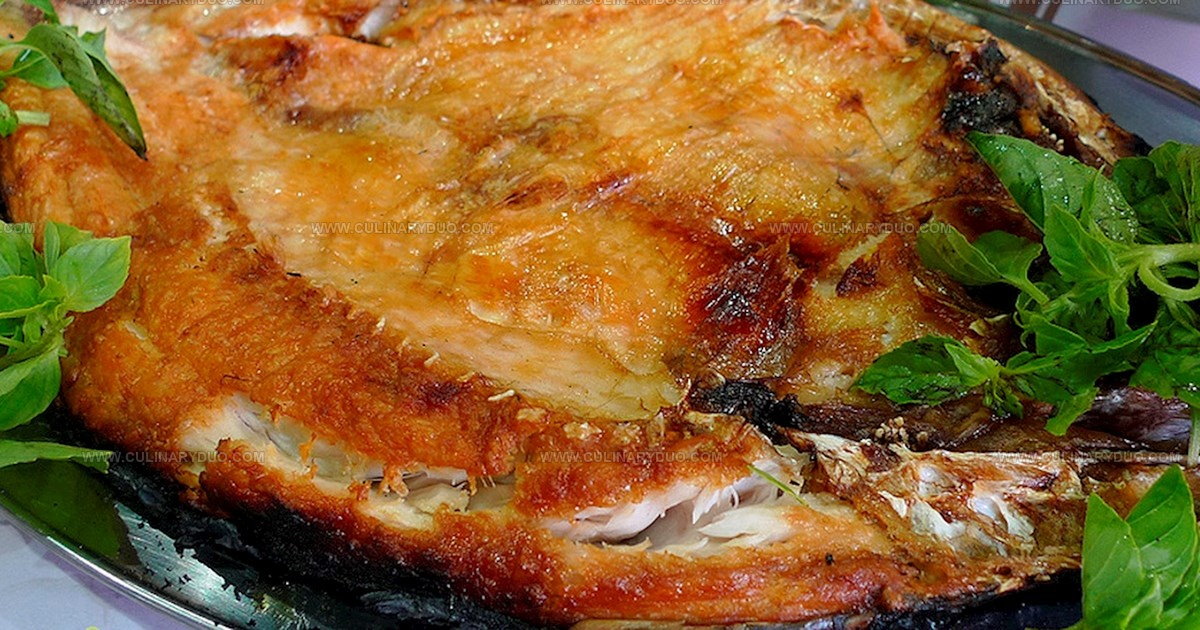
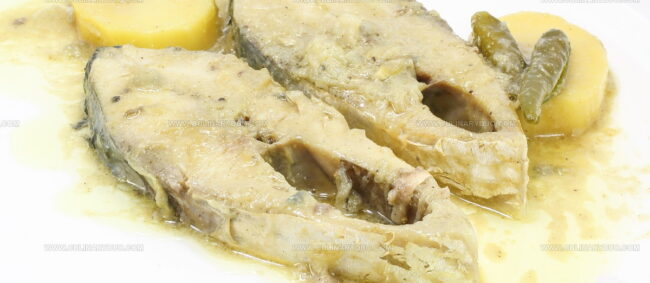
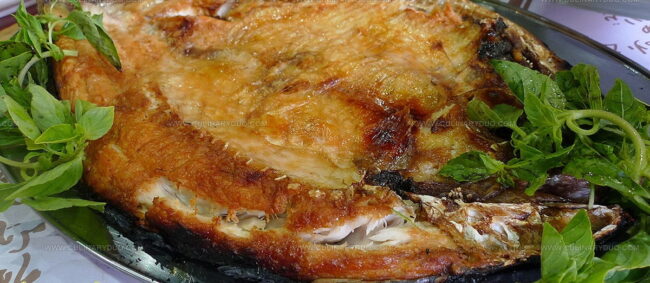
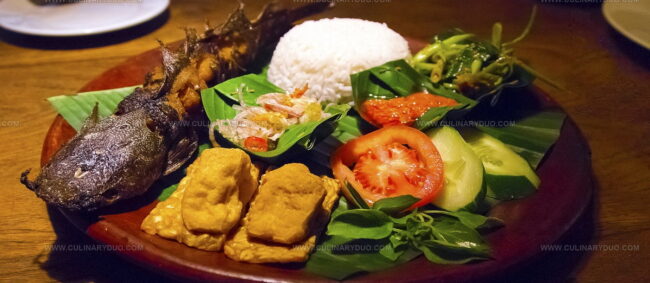
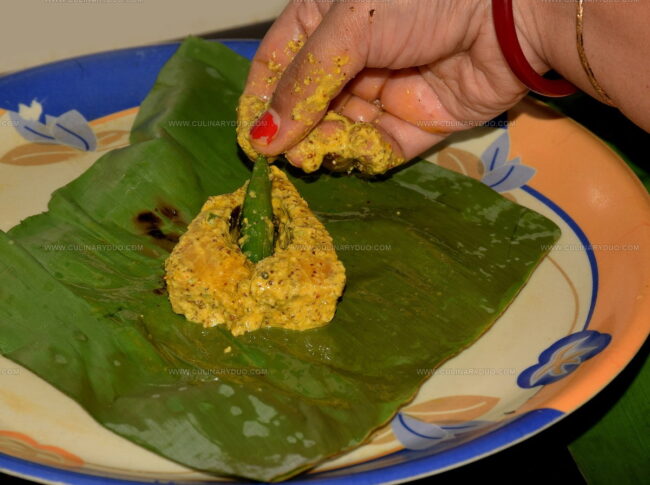
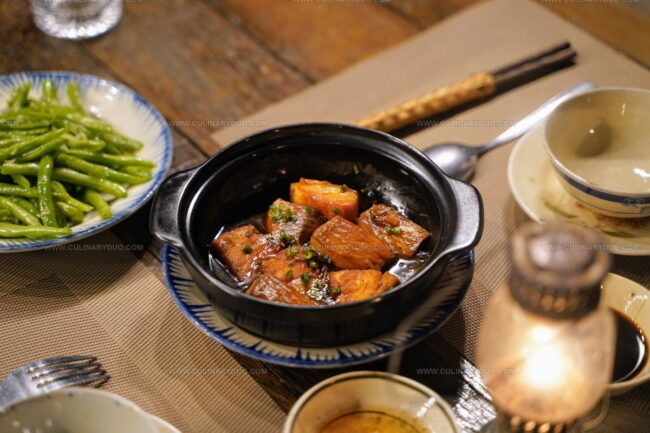

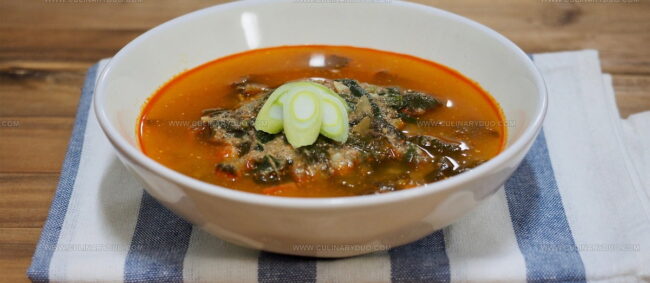
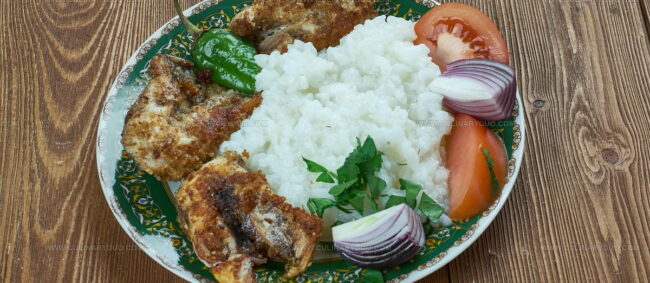
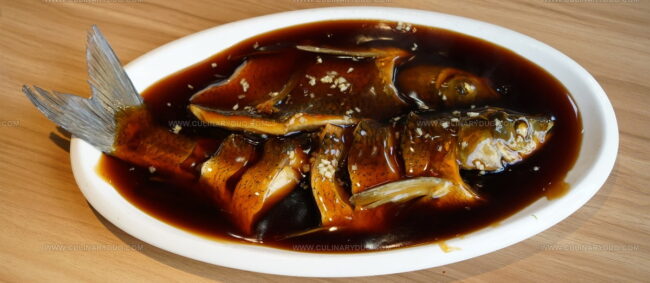
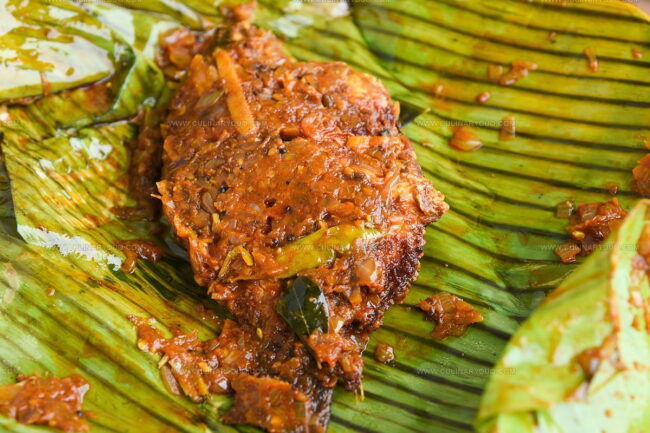
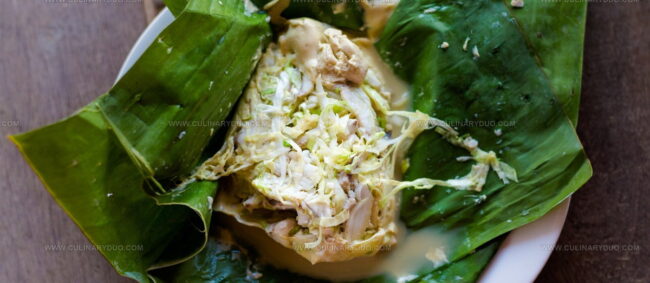
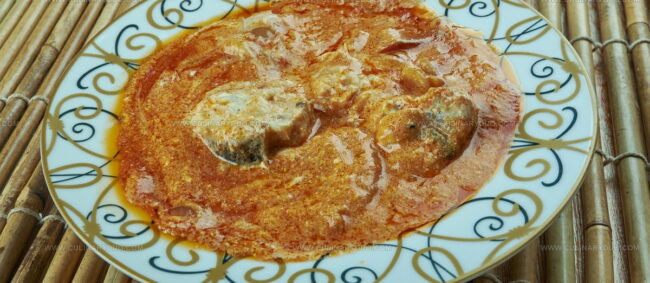

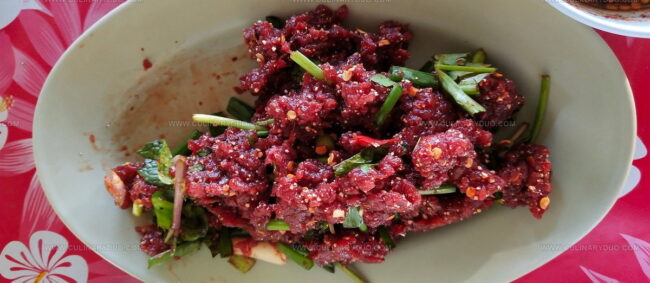
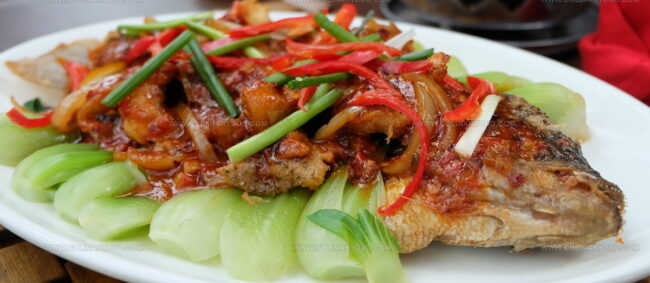
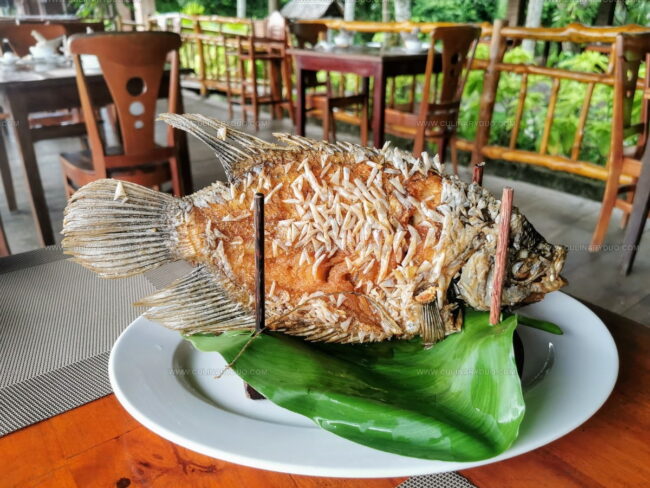
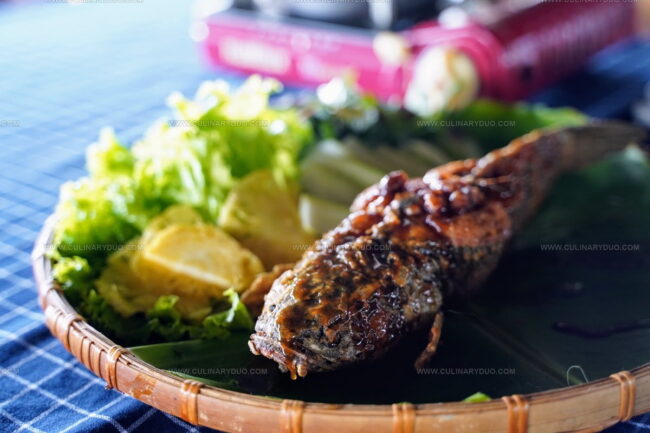
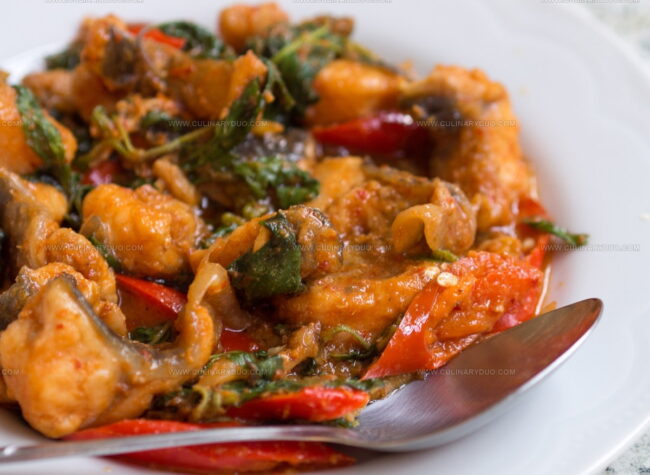
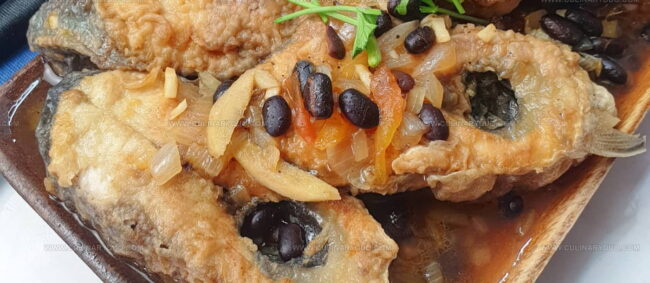
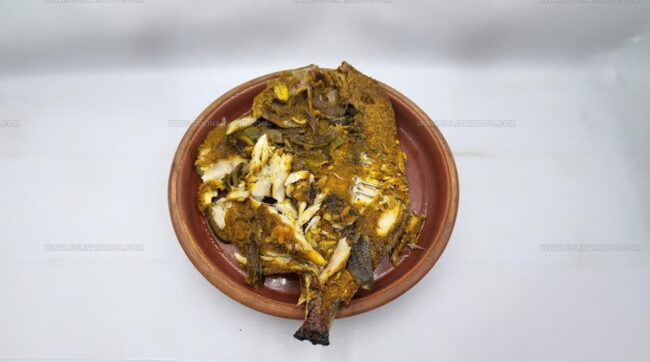
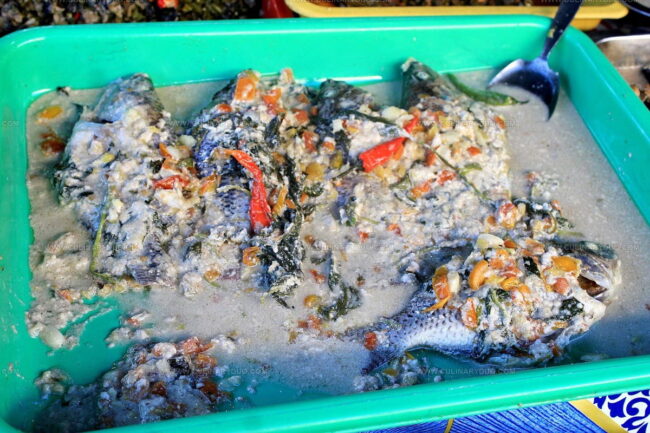
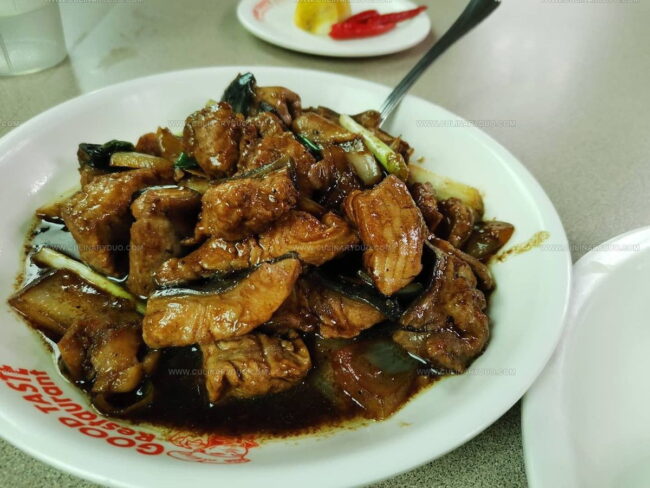

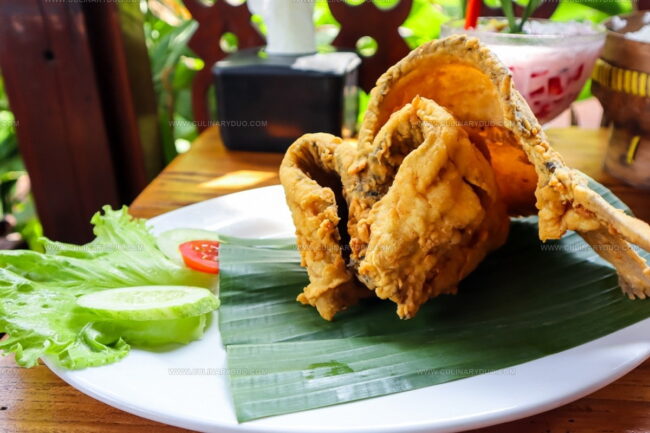
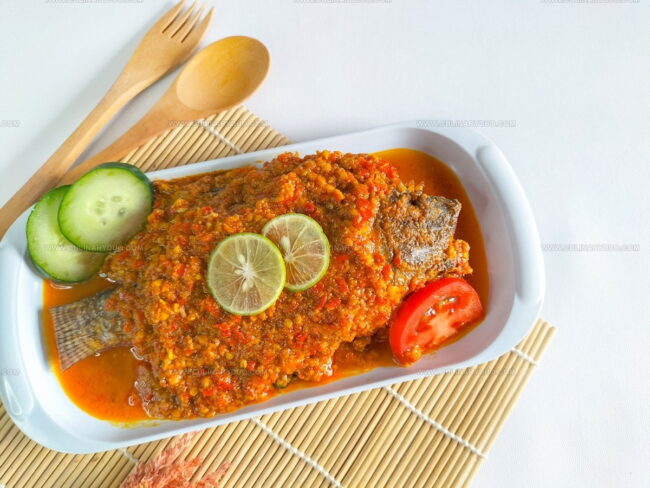
Michael Reyes
Founder & Lead Recipe Developer
Expertise
Education
Santa Fe Community College
Michael’s love for cooking runs deep, rooted in the bold, colorful flavors of his New Mexico upbringing.
After earning his Culinary Arts Certificate from Santa Fe Community College, he spent years sharpening his skills in kitchens that celebrated traditional Southwestern and Latin American dishes.
He believes cooking should feel approachable and fun, never complicated. When he’s not stirring up new recipe ideas, Michael’s out hiking scenic trails, chatting with farmers at local markets, or chasing the perfect sunset shot for inspiration.